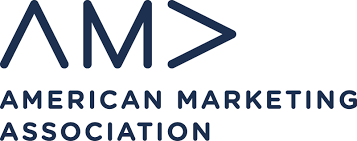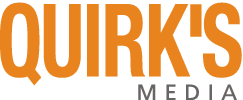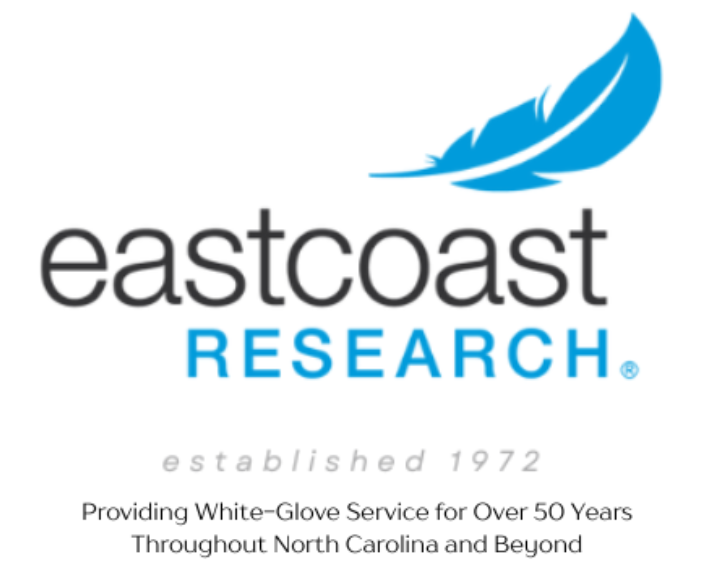
In a world where businesses are flooded with data, the challenge isn’t just collecting information, it’s understanding the why behind consumer decisions. While surveys and analytics offer valuable quantitative snapshots, they often miss the nuanced motivations, emotions, and social influences that drive behavior. This is where focus groups become indispensable.
As a cornerstone of qualitative research methods, focus groups allow organizations to explore consumer perceptions in ways that numbers alone cannot. Here, we’ll explore this key research methodology, including how it can inform various aspects of business, products, and services.
Looking to unlock deeper consumer insights? Discover how Eastcoast Research’s Focus Group Services can help guide your next strategic decision.
What Are Focus Groups?
In the market research landscape, focus groups stand out as one of the most effective qualitative methods for exploring consumer thoughts, feelings, and behaviors. A focus group brings together a small, diverse group of participants—typically between six and ten individuals—to discuss a specific product, service, concept, or experience under the guidance of a skilled moderator.
?Did You Know? The ideal focus group size balances diversity of opinion with the ability to manage conversation flow, which is why most sessions include no more than ten participants.
Unlike surveys or quantitative data collection methods, which prioritize statistical breadth, focus groups are designed to capture depth. They uncover the “why” behind consumer opinions through open-ended discussion, interaction, and observation.
“…focus groups ‘reach the parts that other methods cannot reach’—revealing dimensions of understanding that often remain untapped by the more conventional one-to-one interview or questionnaire.”
— (Kitzinger, 1994)
This dynamic environment encourages participants to articulate thoughts they might not express in a structured questionnaire or even during a one-on-one interview.
Why Leverage Focus Groups?
By bringing participants together in a moderated setting, businesses gain access to candid discussions that reveal underlying attitudes, unmet needs, and emotional responses. These group interactions are guided by psychological principles and structured methodologies designed to uncover authentic insights.
Group dynamics have long been recognized as a critical factor in encouraging open dialogue. Research published in the Sociology of Health & Illness in the 1990s observed how participant interaction can stimulate deeper reflection and richer feedback—an observation still relevant in today’s focus group environments (Kitzinger, 1994).
Whether you’re refining a product, testing a brand message, or seeking clarity on customer behavior, understanding focus group methodology can offer a competitive edge to a complex market landscape.
How Do Focus Groups Differ From Other Research Techniques?
While interviews provide detailed individual perspectives and surveys capture broad trends, focus groups leverage group dynamics to generate spontaneous insights. As Kitzinger’s early research noted, interaction among participants often stimulates ideas and reflections that wouldn’t surface in isolation.
The table below highlights how focus groups compare to other key qualitative research methods offered by Eastcoast Research.
| Method | Strengths | Limitations |
|---|---|---|
| Focus Groups |
|
|
| Surveys |
|
|
| Interviews |
|
|
| Consumer Immersions |
|
|
| Ethnographic Research |
|
|
❓Not sure which method fits your needs? Eastcoast Research’s Study Design experts can tailor a solution that delivers meaningful insights.
Businesses across industries—ranging from healthcare to retail—use focus groups to:
- Test new product concepts.
- Evaluate marketing messages.
- Explore brand perceptions.
- Identify unmet consumer needs.
This method proves especially valuable when exploring topics where emotions, social influence, or nuanced preferences play a critical role.
For organizations weighing qualitative methods, focus groups offer a structured yet flexible approach to understanding consumer behavior in context. They are often most effective when combined with other methodologies, such as surveys or interviews, to provide a comprehensive view of the market landscape.
The Psychological Science Behind Focus Groups
What makes focus groups so effective isn’t just the questions being asked—it’s the psychology unfolding within the room. The power of focus groups lies in understanding how human behavior, social dynamics, and cognitive patterns influence the way participants share information.
Group Dynamics and Social Influence
When individuals engage in a group setting, conversations often evolve beyond initial responses. Social cues, validation from peers, and collective brainstorming foster an environment where participants feel encouraged to expand on their thoughts.
“Focus groups allow participants to discuss potentially complex phenomena, such as identity, power, or race, in a more amenable setting.”
— (Cyr, 2015)
Studies have noted that participants are more likely to express nuanced opinions when they hear others articulate similar experiences or challenge their viewpoints (Cyr, 2015). While this dynamic can unlock deeper insights, it also introduces psychological phenomena like groupthink, where individuals may conform to perceived majority opinions.
Emotional and Nonverbal Cues
Focus groups offer researchers the advantage of observing more than just spoken words. Body language, tone shifts, and facial expressions often reveal hesitation, enthusiasm, or skepticism that participants might not verbalize. A skilled moderator leverages these cues, prompting follow-up questions that tap into underlying sentiments.
?Key Insight: A review in Advanced Focus Group Research highlighted how nonverbal communication frequently signals discrepancies between what participants say and what they truly feel—providing critical insights for product testing and brand perception analysis (Fern, 2001).
Cognitive Biases in Focus Groups
Human thinking is rarely free from bias, and focus group settings are no exception. Common biases such as confirmation bias, anchoring, and recency bias can influence how participants respond to questions or each other’s comments.
This is where the role of an experienced moderator becomes crucial. Moderators are trained to recognize when discussions are being swayed by bias and to steer conversations back toward authentic, unbiased insights. As research in Sociological Methods & Research suggests, managing these subtle psychological influences is key to ensuring the reliability of focus group findings (Cyr, 2015).
How Focus Groups Tap Into Consumer Behavior
Understanding what consumers do is one thing—understanding why they do it is where true market advantage lies. Focus groups excel at uncovering the motivations, perceptions, and unmet needs that drive consumer behavior, offering businesses insights that go far beyond surface-level data.
Understanding Consumer Motivations
Consumers often make decisions based on a mix of logic, emotion, and subconscious influence. In a focus group setting, open-ended discussions allow participants to articulate these decision-making processes in ways that structured surveys cannot. When individuals hear peers describe similar experiences or challenges, it triggers deeper self-reflection, revealing what truly drives preferences and purchasing behavior.
Uncovering Unmet Needs
Many consumers can’t always articulate what they want—until they start talking about their frustrations, habits, or past experiences. Focus groups create a conversational environment where these latent needs naturally surface.
?Did You Know? Consumers often discover their own unmet needs during focus group discussions—insights that companies can leverage to innovate products or services before competitors even recognize the opportunity.
This aspect of exploratory research is invaluable for brands aiming to stay ahead of market trends or identify gaps in their offerings.
Testing Perceptions and Branding
A company’s internal view of its brand or product can differ significantly from how consumers perceive it. Focus groups offer a reality check by capturing candid reactions to marketing messages, packaging, logos, or advertising campaigns. This immediate feedback helps businesses adjust their branding strategies to better align with consumer expectations and emotional responses.
Product and UX Testing
Focus groups are also instrumental in refining products and digital experiences. Whether evaluating a physical prototype or a website interface, businesses can observe firsthand how users interact with their offerings, identify pain points, and gather suggestions for improvement.
?Key Insight: In Focus Group Discussions: Understanding Qualitative Research emphasized that participants’ spontaneous reactions during product testing often reveal usability issues and feature preferences that structured testing might overlook (Hennink, 2014).
For businesses aiming to optimize user experience, combining focus groups with services like Usability Testing or Home Use Tests can deliver comprehensive insights that drive smarter design decisions.
The Role of a Skilled Moderator in Extracting Insights
A focus group is only as effective as the person guiding the conversation. While the group dynamic and discussion topics are critical, it’s the moderator who ensures that valuable insights emerge. Skilled moderation transforms a casual discussion into a structured exploration of consumer behavior.
Building Trust and Engagement
Participants are more likely to share honest opinions when they feel comfortable and respected. A skilled moderator creates an inclusive environment where every voice is encouraged—fostering open dialogue while remaining neutral and attentive to group dynamics.
Asking the Right Questions
Effective focus groups don’t rely on rigid scripts. Moderators use open-ended, probing, and follow-up questions to dig beneath surface-level answers. This adaptive questioning technique helps uncover motivations, emotions, and hidden concerns that structured surveys or inexperienced facilitators might miss.
?Key Insight: Research suggests that moderators who employ flexible, conversational techniques are more successful in eliciting authentic responses compared to those who adhere strictly to predefined questions (Krueger & Casey, 2014).
Managing Group Dynamics
Every group has dominant voices and quieter participants. A trained moderator ensures that no single perspective overshadows others by actively balancing participation. This careful management prevents bias, reduces the risk of groupthink, and ensures a diversity of viewpoints is captured.
Partnering with experts who understand these nuances can make the difference between superficial feedback and deep, actionable insights.
From Discussion to Data: How Insights Are Analyzed
The value of a focus group doesn’t end when the conversation stops. In fact, that’s when the real work begins. Transforming hours of dialogue into actionable business intelligence requires a structured approach to qualitative data analysis—where patterns, themes, and sentiments are carefully extracted from open-ended discussions.
Qualitative Data Collection
Every focus group session generates a wealth of raw data—transcripts, video recordings, moderator notes, and observational cues. These materials form the foundation for analysis, capturing not only what was said, but how it was said.
With the rise of digital platforms, virtual focus groups have expanded these capabilities, allowing for advanced recording tools, automated transcription, and broader participant reach. Interestingly, early research on online focus groups anticipated many of these advantages long before today’s technology made them a standard practice (Turney & Pocknee, 2005).
Thematic Analysis and Pattern Recognition
Analyzing focus group data isn’t about counting responses—it’s about identifying recurring themes, emotional undercurrents, and shifts in perception. Researchers look for patterns in language, tone, and sentiment that reveal deeper consumer truths.
?Key Insight: In Getting the Focus and the Group: Enhancing Analytical Rigor in Focus Group Research, it is emphasized that rigorous qualitative analysis—using thematic frameworks and cross-referencing participant responses—is essential to ensure reliability and avoid anecdotal conclusions in focus group research (Kidd & Parshall, 2000).
Combining Focus Group Data with Other Research Methods
While focus groups provide depth, pairing qualitative insights with quantitative data creates a more comprehensive understanding of consumer behavior. For example, themes uncovered in a focus group can inform survey design, while statistical trends can validate or challenge qualitative findings.
Eastcoast Research frequently integrates focus group outcomes with services like Central Location Testing and Virtual Research to deliver well-rounded, data-driven strategies for clients.
Bringing Consumer Voices to the Forefront
In a marketplace driven by data, it’s easy to overlook the human element behind consumer decisions. Focus groups bridge that gap—offering businesses a window into the thoughts, emotions, and motivations that numbers alone can’t reveal. Grounded in psychological principles and guided by skilled moderation, focus groups turn conversation into actionable insight.
Whether it’s identifying unmet needs, refining a product, or testing brand perception, the value of hearing directly from consumers remains unmatched. But the difference between surface-level feedback and meaningful data lies in the methodology and expertise behind each session.
For organizations seeking deeper understanding and smarter decision-making, partnering with an experienced research team is essential. With decades of experience and a proven track record, Eastcoast Research delivers focus group solutions that go beyond observation—transforming consumer voices into strategic advantage.
Ready to leverage the power of expertly led focus groups? Learn more about our approach and start your next project by requesting a bid.
Sources
Cyr, J. (2015). The Pitfalls and Promise of Focus Groups as a Data Collection Method. Sociological Methods & Research, 45(2), 231-259. https://doi.org/10.1177/0049124115570065
Fern, E. F. (2001). Advanced focus group research. SAGE Publications, Inc., https://doi.org/10.4135/9781412990028
Hennink, M. M. (2014). Focus group discussions. Oxford University Press. https://doi.org/10.1093/acprof:osobl/9780199856169.001.0001
Kidd PS, Parshall MB. Getting the Focus and the Group: Enhancing Analytical Rigor in Focus Group Research. Qualitative Health Research. 2000;10(3):293-308. https://doi.org/10.1177/104973200129118453
Kitzinger, J. (1994), The methodology of Focus Groups: the importance of interaction between research participants. Sociology of Health & Illness, 16: 103-121. https://doi.org/10.1111/1467-9566.ep11347023
Krueger, R. A., & Casey, M. A. (2015). Focus Groups: A Practical Guide for Applied Research (5th ed.). Thousand Oaks, CA: SAGE Publications.
Turney, L., & Pocknee, C. (2005). Virtual Focus Groups: New Frontiers in Research. International Journal of Qualitative Methods, 4(2), 32-43. https://doi.org/10.1177/160940690500400203
Frequently Asked Questions
What is the main purpose of a focus group?
Focus groups are designed to explore consumer attitudes, perceptions, and motivations through guided discussions. They uncover insights that quantitative methods often miss, providing depth and context to consumer behavior.
How do focus groups differ from surveys?
Surveys collect broad, quantifiable data, while focus groups dive into the “why” behind consumer opinions. Focus groups leverage conversation and group dynamics to reveal emotions, preferences, and hidden concerns. Learn more about combining these methods with our Survey Services.
How are participants selected for a focus group?
Participants are carefully recruited based on demographic, behavioral, or psychographic criteria relevant to the research objectives. Eastcoast Research ensures diverse, articulate participants through expert recruitment strategies.
What role does a moderator play in a focus group?
A moderator guides the discussion, encourages balanced participation, and probes deeper into responses—all while minimizing bias. This ensures that the insights gathered are authentic and actionable.
Can businesses conduct focus groups online?
Yes, virtual focus groups are a flexible, effective option—especially for reaching geographically dispersed participants.
How do companies analyze focus group data?
Through thematic analysis, pattern recognition, and integration with quantitative data. Structured methodologies ensure that findings are reliable and actionable.
What industries benefit most from focus groups?
Focus groups provide valuable insights across sectors like healthcare, retail, financial services, media, and more. See how Eastcoast Research supports diverse industries in our Portfolio.
How many people should be in a focus group?
Typically, 6 to 10 participants strike the right balance between diverse perspectives and manageable discussion flow.
How long does a focus group session usually last?
Most sessions run between 60 and 120 minutes, depending on the complexity of the topic and research objectives.
What are some common mistakes in conducting focus groups?
Poor moderation, unclear objectives, and inadequate participant recruitment can undermine results. Partnering with experienced professionals like Eastcoast Research helps avoid these pitfalls.







